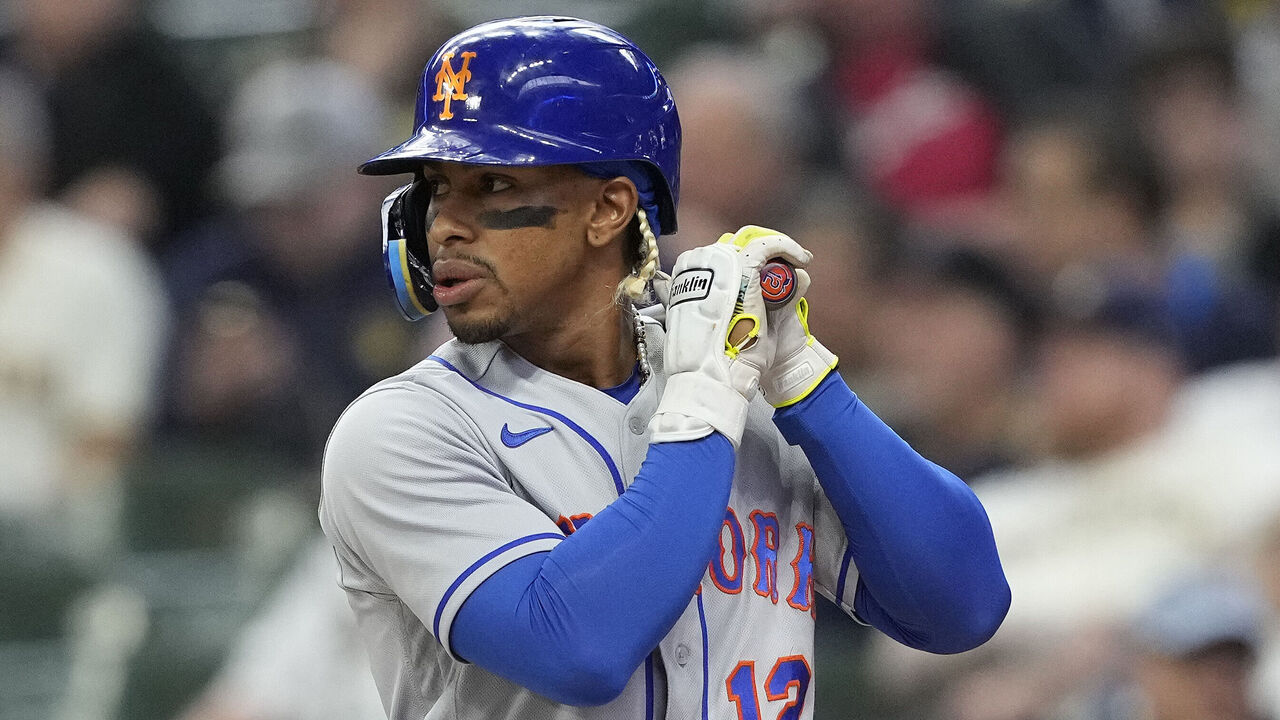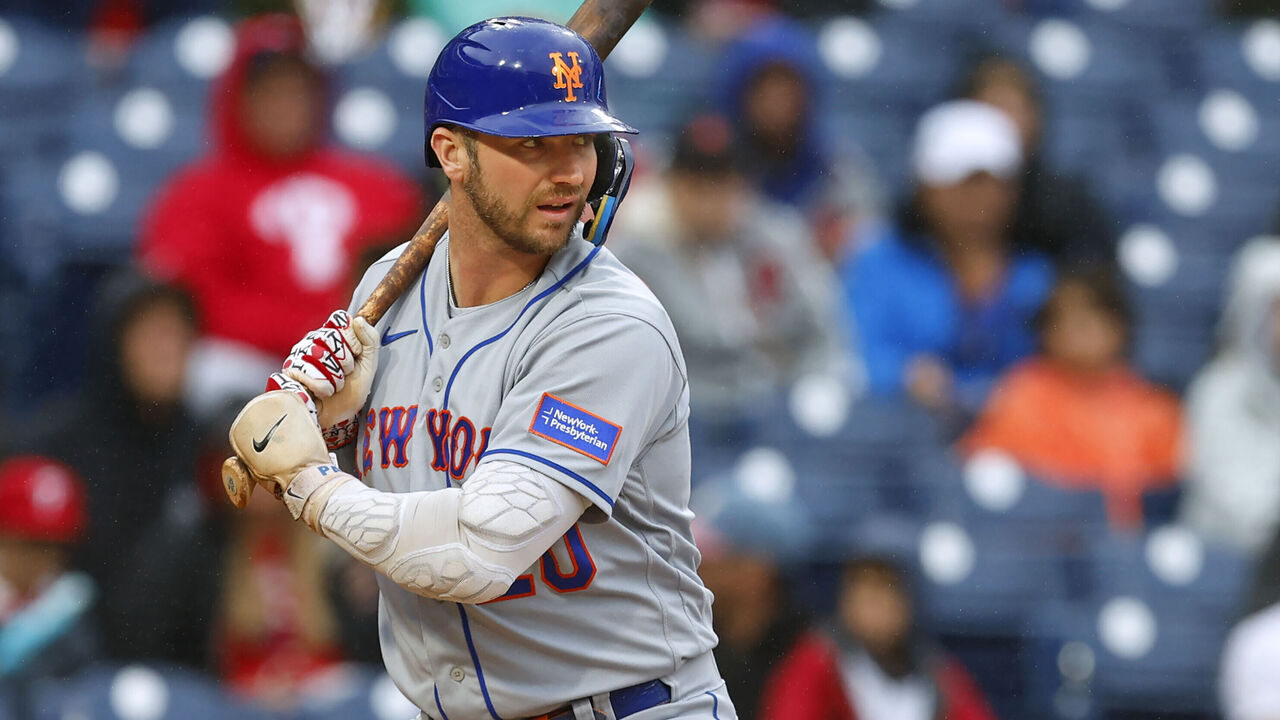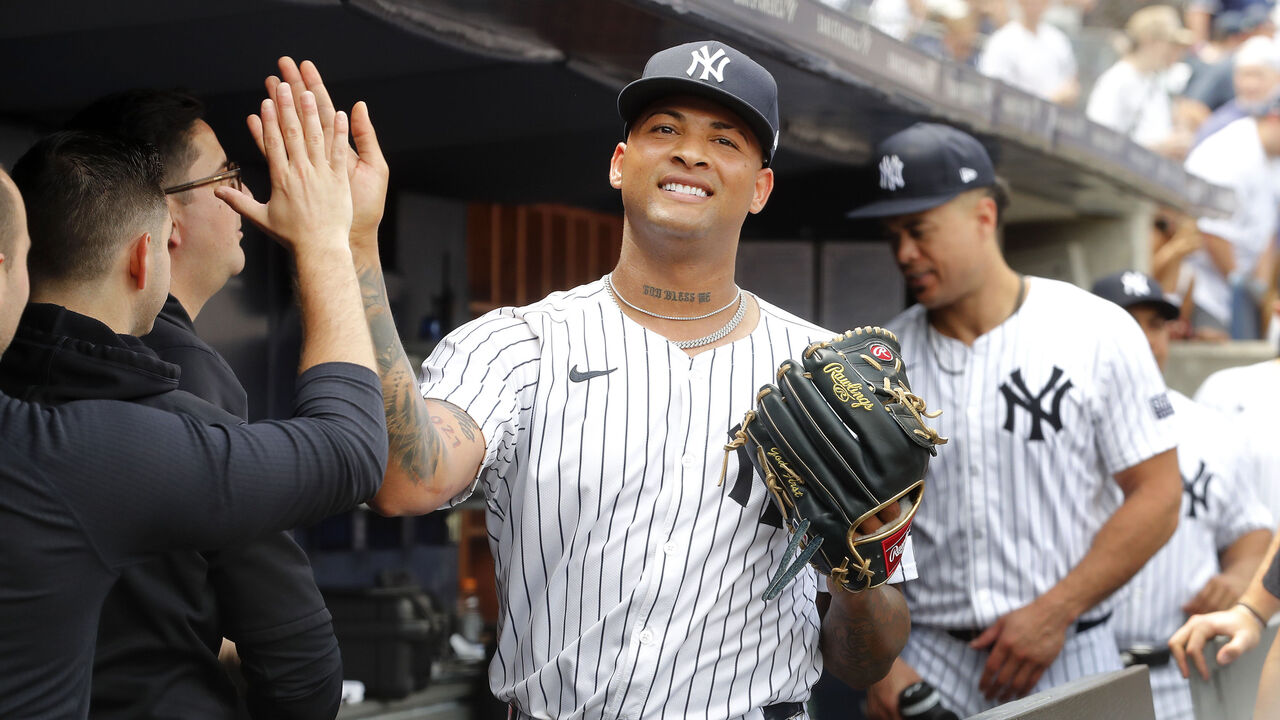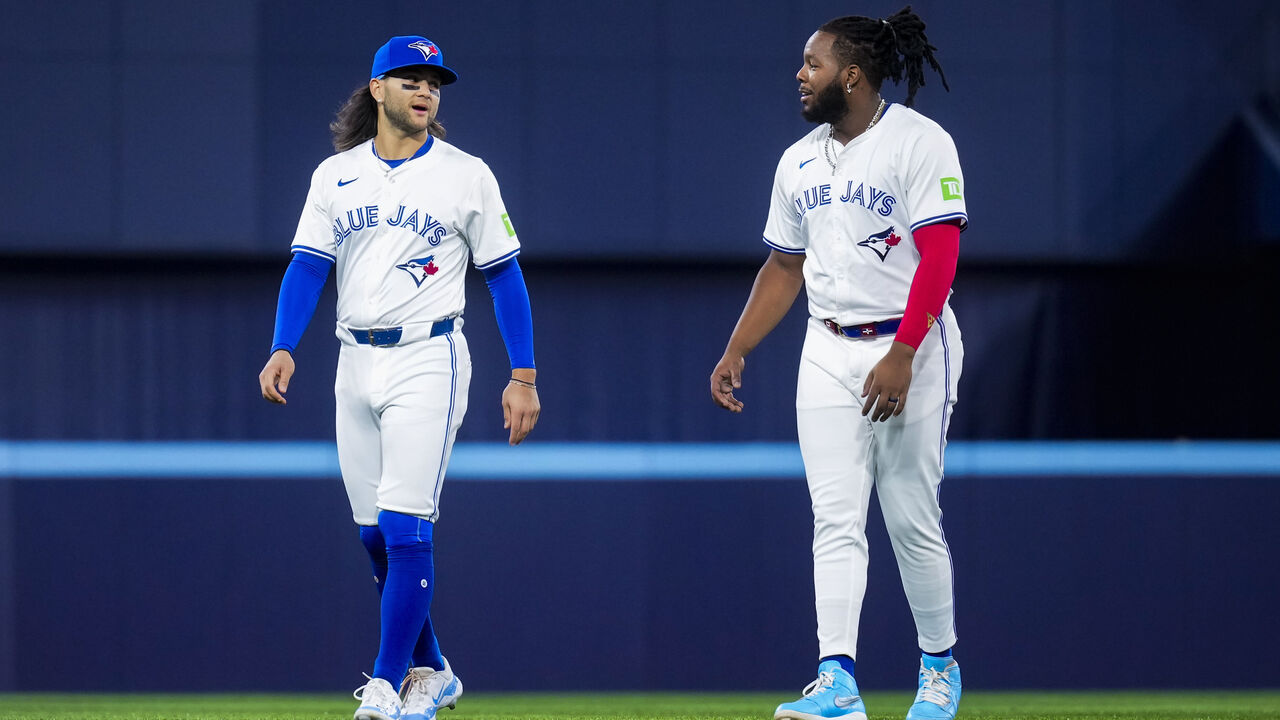MLB offenses are ice cold, plus 8 other observations
Starting Lineup is a biweekly collection of reporting, observations, and insights from the baseball beat, published every other week during the regular season.
Leading off …
The New York Mets are off to a middling start with their bats.
Entering play Friday, they're batting .237 as a team. Despite owning the game's largest payroll, they've hit only about a homer per game (51 through 49 contests). That's about in line with the league average. Lineup keystones like Pete Alonso and Francisco Lindor are off to disappointing starts.
The Mets are averaging 4.27 runs per game this season, down from 4.43 last year.
While it seems like the Mets' lineup is off to a sluggish start, their 102 wRC+ means they are performing a tick above league average and a bit better than they performed last year (101).
While it might seem like they're falling a bit short at the plate, the truth is that just about every team is.
More than a quarter of the way through the season, a great mystery has emerged: Why is offense down in Major League Baseball? Were rule changes not just put in place last year to increase it?

Entering play Friday, MLB's batting average sat at .240, which, if it held, would be the lowest since hitters hit .238 in 1968, the so-called "year of the pitcher."
Total runs are down to 8.68 per game compared to 9.23 last season.
And, interestingly, batting average on balls in play (BABIP) is .288, which is down a full nine points from last year despite this being the second year of the infield-shift ban. If that mark held, it would be the lowest since 1992 (.285).
More fly balls are dying on warning tracks this season. Home runs are on pace to be down 800 from a year ago. League-wide OPS sits at .699 and hasn't finished below .700 since 1989.
Through May 22 of last season, the home run-to-fly ball rate was 12.3%, batting average was .247, and BABIP stood at .297. Those numbers are all superior to this year (10.9%/.240/.288). Yet hitters are striking out slightly less this season: 22.3% versus 22.7% last year.
Yes, the weather will warm up and offenses probably will too, but this season's numbers are confounding.
"Pitchers are just good. That's what it comes down to," Lindor told theScore when the Mets visited Cleveland this week. "They have a guy over there (Emmanuel Clase) that in 20-plus games he has a 0.39 ERA. They are good. ... The game just keeps getting better."
Entering play Friday, Lindor owns the 21st-largest drop in wRC+ over last season among players with at least 150 plate appearances in 2024.
Asked if defenses have somehow adjusted to make up for the shift ban, and lower BABIP, Lindor had doubts.
"It's one of those things when you take the shift away, you are really only taking the hits that were short line drives to short right field," Lindor said. "We are still pinching up the middle."
Alonso is also not off to the start he or the Mets want. He suspected cold weather in the early season could be a factor, but he agreed with Lindor that the run-scoring recession is largely due to pitchers, who keep improving with new designer breaking balls and increased velocity.
"Not just adding skill, (but also) adjustability," Alonso said. "Because information is so readily available, it's easier to make quicker adjustments. With all the metrics - it's easier to replicate pitches in order to be successful.
"Pitchers are good."

Not only is fastball velocity increasing, but pitchers are relying on it less. Only 47% of pitches this season are four- or two-seam fastballs. That's the lowest in the Statcast era, which goes back to 2008. That means more breaking balls and offspeed stuff to play off those fastballs.
There's also the usual suspects. Is it the game ball, the humidors in every stadium, or both?
"The baseball seems to never change," Lindor said with a grin.
No. 2: Were shifts effective?
To Lindor's point about the shift ban not having a significant effect, BABIP is 12 points below where it was in 2015 when shifts started to proliferate.
There were just over 2,900 shifts in MLB in 2010 compared to 23,000 in 2015. They ballooned up to 72,000 by 2022.
And despite that exponential increase, league-wide BABIP actually increased from .297 in 2010 to .299 in 2015. Historically, BABIP hovers around .300, though it's dipped to the lower .290s in recent years.
It seems shifts were simply never that effective, and the game is more aesthetically pleasing without them.
The pitch clock has made a dramatic impact (and a good one) to the pace of play. The run-game rules have added more action. But the shift ban doesn’t appear to be doing much of anything.
No. 3: Taking an L
When ace Gerrit Cole went down with an elbow strain this spring, I thought the Yankees' starters would struggle. The Yankees entered the season with numerous questions in their rotation. Well, they've answered them.
Luis Gil has been a revelation (2.39 ERA) and recently posted a 14-strikeout gem against the Chicago White Sox. There were questions about Nestor Cortes' health, but he looks as if he's back to his previous form. After a shaky spring, Carlos Rodón is performing more like the lefty arm they thought they were getting in free agency two winters ago. Entering play Friday, the Yankees lead the majors in team ERA (2.86).

Now, Cole is nearing a return. He's throwing off the mound, hitting 96 mph (though sitting in the low 90s), and isn't ruling out a June return.
No. 4: Cruz missiles and misfires
Oneil Cruz might be the most confounding player in the majors.
On Tuesday night, he hit the two fastest batted balls of the year - a 121.5-mph double and 120-mph single - and became the first player in the Statcast era to produce three batted balls of 118 mph or faster in one game.
But he also dropped a pop-up that night. A day later he struck out three times in a hitless effort and made a lackadaisical throwing error.
Oneil Cruz recorded the hardest-hit ball in MLB this season TWICE in the same game.
— Pittsburgh Pirates (@Pirates) May 22, 2024
1st Inning ➡️ 120.4 mph
9th Inning ➡️ 121.5 mph
He's the first player in the Statcast Era to have multiple hits of 120.0+ in the same game. pic.twitter.com/neOrdtdf6Y
He owns some of the best tools in the majors. Whether he can further refine them is one of baseball's great player-development challenges.
The Pirates need bats to add to promising, front-line pitchers Paul Skenes and Jared Jones.
No. 5: Blue Jays' big question
MLB.com's Mark Feinsand reports, citing an anonymous executive, that the Blue Jays are shopping Vladimir Guerrero Jr. and Bo Bichette. That the Blue Jays are testing the waters should surprise no one given their struggles thus far. If anything, the Jays are just conducting proper due diligence. Still, the club is likely best served by playing it out with Guerrero and Bichette.
For starters, the Blue Jays would be selling at a career low point on Bichette (89 wRC+), and low on Guerrero (.404 slugging). Given their limited control over both players - each is a free agent after next season - combined with pricey forthcoming arbitration paydays, neither has incredible trade value.
Trading either, or both, eliminates any possibility of enjoying bounce-back performances this summer or in 2025.

Such trades would initiate a rebuild, likely a lengthy one, with what currently is regarded as a weak farm system. The third wild card will keep many teams at least on the outskirts of the playoff race, so such a move must be considered carefully.
If either player is traded and immediately excels, it will place further pressure on Blue Jays leadership. It will bring into question coaching and player development efforts. The Blue Jays have tough calls ahead.
No. 6: Robots are coming
MLB commissioner Rob Manfred told reporters this week there's a growing "consensus" in favor of a challenge-based, automated ball-strike system as opposed to a fully automated zone.
On one hand, a challenge system would retain the skill of framing pitches and reward those hitters who have a better idea of the zone. On the other hand, if the tech exists, shouldn't MLB want to get all the calls correct?
Either way, the robots are likely coming to baseball in some form.
No. 7: A new hitter's park?
One place where hitters are getting a break is Cleveland. Progressive Field's renovation has removed much of the third-deck seating in right field and along the third-base line. Those altered upper deck sections face each other, so something of a cross-breeze effect could be occurring, benefiting mostly left-handed hitters, who have hit 37 of the 61 homers at the stadium this year.
This open air section is now across from one pic.twitter.com/YrJs9Z24z6
— Travis Sawchik (@Travis_Sawchik) May 22, 2024
According to MLB Statcast's ballpark measures, fly balls are carrying an extra five feet compared to 2022, and three feet further than 2023, due to "environmental" factors.
No. 8: 80-grade awareness
Who isn't interested in a great heads-up play? Incredible awareness from Yankees catcher Jose Trevino this week on a rare back-pick toss to third base.
Absolute savagery by Yankees backstop Jose Trevino.
— Tyler Goodro (@goodrocatching) May 19, 2024
High situational awareness. Caught’em nappin’ pic.twitter.com/6MMI0PJUmi
No. 9: Next CBA cycle won't be fun
A divided players group attempted something of a coup against some of the existing MLBPA leadership this winter. Scott Boras had one of his worst offseasons on record. Now, Yankees owner Hal Steinbrenner - amid an excellent start to the season - said this week that he's spending too much money. The Yankees' $305-million payroll ranks second to the Mets ($307 million).
"I'm gonna be honest, payrolls at the levels we're at right now are simply not sustainable for us financially," Steinbrenner said. "It wouldn't be sustainable for the vast majority of ownership (groups), given the luxury tax we have to pay."
Perhaps it's just posturing. It's not clear what that means for Juan Soto's contract negotiations. But if the No. 1 revenue team claims it cannot be profitable (albeit without sharing its financial data), it could be an ugly next CBA cycle. The current CBA expires after the 2026 season.
Travis Sawchik is theScore's senior baseball writer.
HEADLINES
- Cavs sweep Heat with 55-point Game 4 blowout
- Panthers stun Lightning late to move 1 win away from 2nd round
- Martinez pitches 6 sparkling innings to give Reds 5th straight win
- Mikkola ejected for boarding, Hagel injured on unpenalized Ekblad hit
- Mets' Nimmo breaks out of slump, drives in 9 to tie franchise record